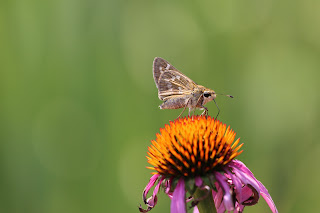 |
| One of my first photos with my new T4i |
First appearances can be deceptive. In this instance, the new Rebel looks just like a clone of the 600D (T3i). But if you look at the new digital SLR a bit further, you observe some astounding changes.
In order to "see" the reasons for a new release in this very popular camera series, you have to get your hands dirty, as it were. But first, take a look at the camera itself. You will have to find the name on the front of the camera to know which Rebel it actually is. The initial difference shows up on the mode dial at the top of the camera body.
Two new mode positions
What you will see is two new mode settings. They are "Hand Held Night" mode and "HDR with Backlight" mode.The first new mode, "Hand-held Night" should be easy to figure out. Make use of this mode selection when it would typically be very difficult to get a good image due to the fact that the light is too low.
One of the sought features for new models is HDR. It gives the photographer a series of 3 shots, changing the exposure of each shot and then combining them into a single "High Dynamic Range" picture. This one feature is very attractive to a number of camera buyers.
New "Under the hood" Features
The brand new DIGIC 5 image processor is what drives this digital SLR. This is the first processor upgrade in quite some time. However, Canon has announced that this upgraded piece of hardware has 4 times the processing power of the DIGIC 4.Going back a number of years, Canon Rebels (and more advanced models as well) have not increased the sensor size. It is an 18 megapixel CMOS sensor. Not only is this sensor in the latest Rebel models, but it is also the sensor of record in more professional models such as the Canon 60D and 7D.
In spite of being the same size, it is quite a bit different. The sensor is new in that it is a "hybrid CMOS AF" sensor. According to Canon, it is much better at recognizing focus such as face detection and continuous focus in Live View. Personally, this one difference between the T3i and my new T4i has possibly had the most impact.
"Visual Upgrades"
Canon is first out of the gate with a new feature to Digital SLR technology. The Rebel T4i is the first digital SLR with a touch-screen LCD. This is very cool, and it will entice some of you tekky folks with iPhone-like actions such as pinch to enlarge and swipe through your images by moving your finger across the LCD panel. Not only that, you can now select settings by touch. You don't have to learn which button to push or which direction to go using the myriad of selectors on the right side of the LCD screen.ISO sensitivity has also been upgraded too. On the T3i, ISO max is 12800, but on the T4i that number has doubled to 25600.
The continuous shooting rate is yet another upgrade. Where the continuous shooting rate comes into play is in action photography, such as sports, pet activity, or children in constant motion. The new T4i has a continuous burst rate of 5.0fps vs 3.7fps in the T3i.
A new focus system which includes 9 cross-processing focus points vs one for the T3i is another impressive improvement. This focus system is similar to cameras that are considered in the pro and semi-pro range of digital SLRs.
Three elements of video have been upgraded.
* The T4i now has continuous auto focus in video mode. This is huge if you are one who shoots a lot of video.
* Touch screen focus is the second enhancement to video. Simply touch the interactive LCD, and the camera will focus on the point you indicated.
* Additionally, there is also better audio input. There are now two stereo mics repositioned on top of the camera to pick up sound much better. The videographer can also set the sound input level, something new for a Canon Rebel camera.
In general, the new Rebel T4i is looking good.
Posted by Wayne Rasku - WayneRasku.com



